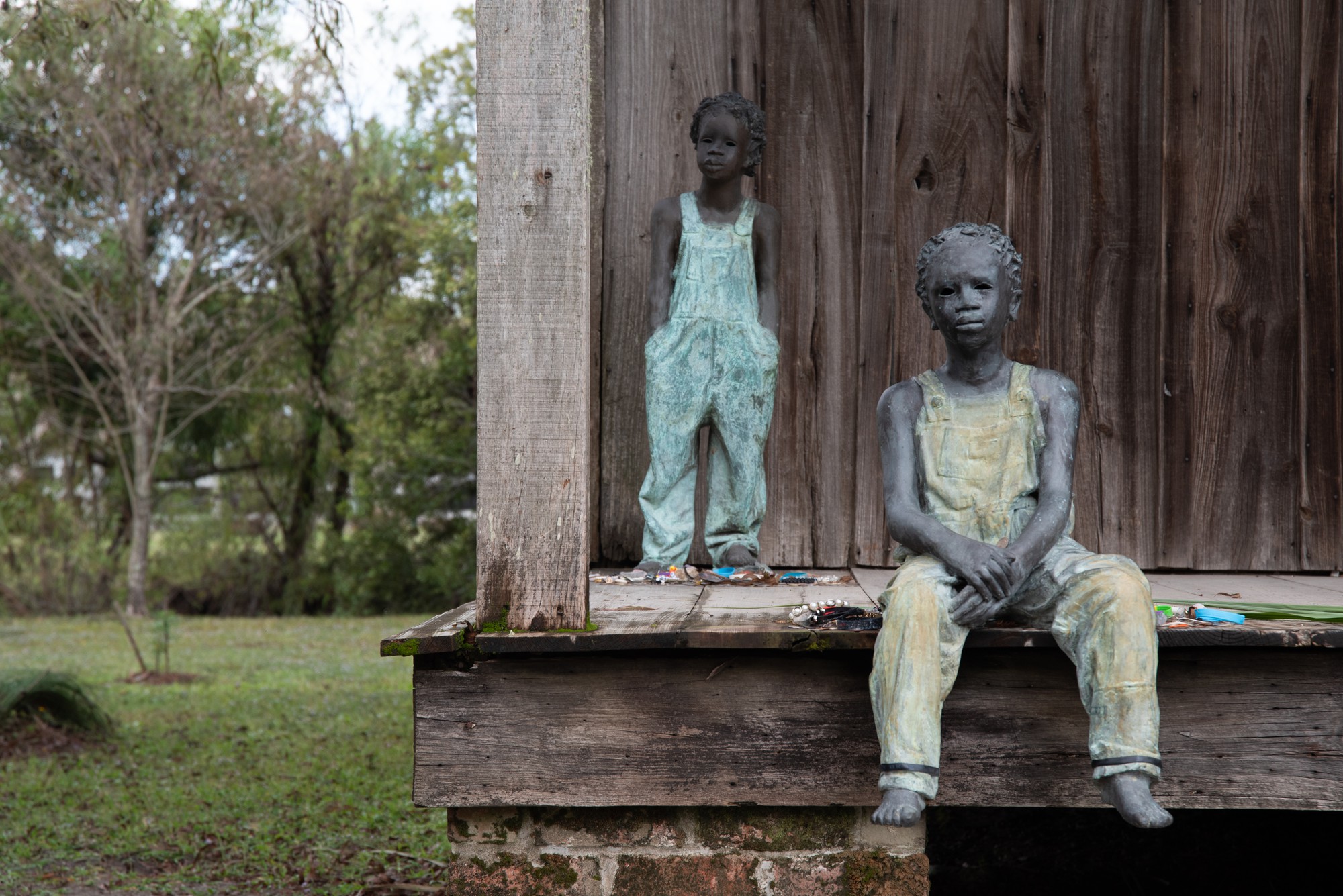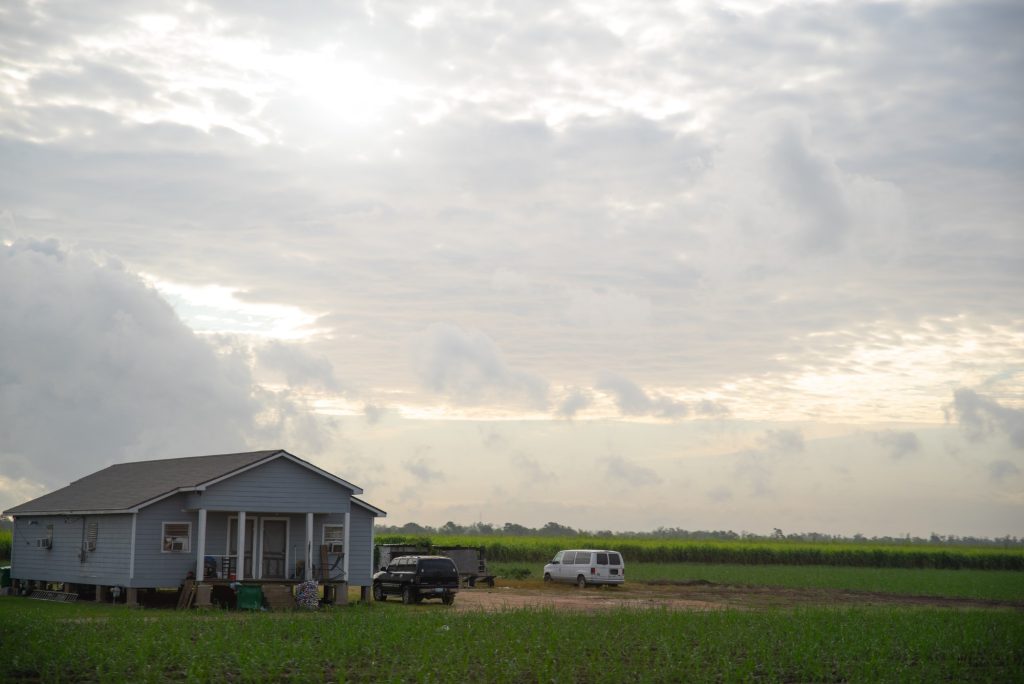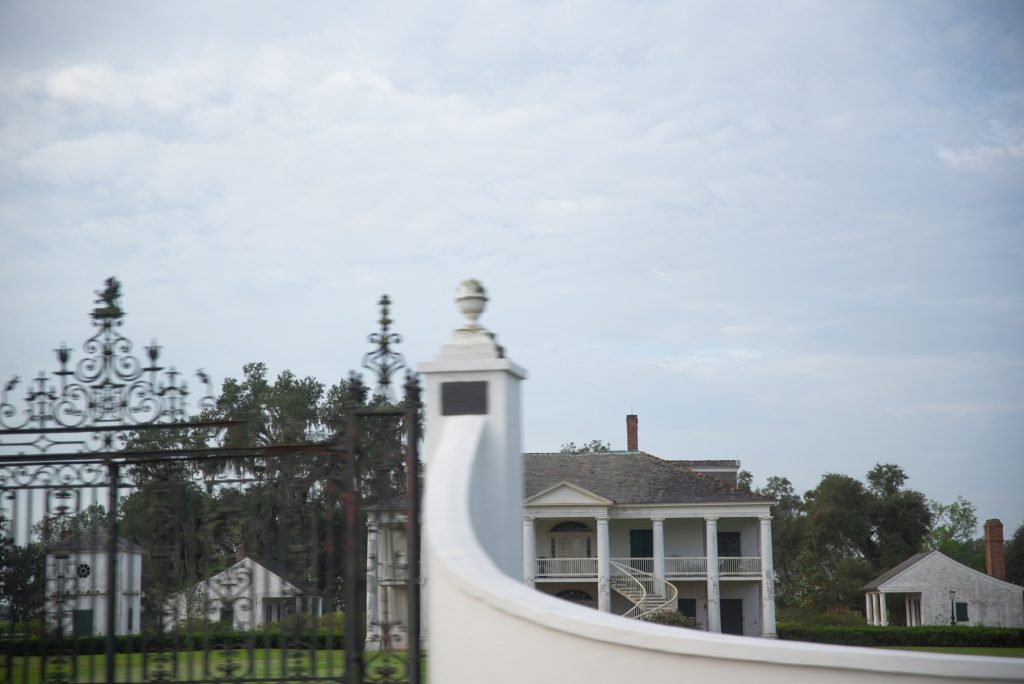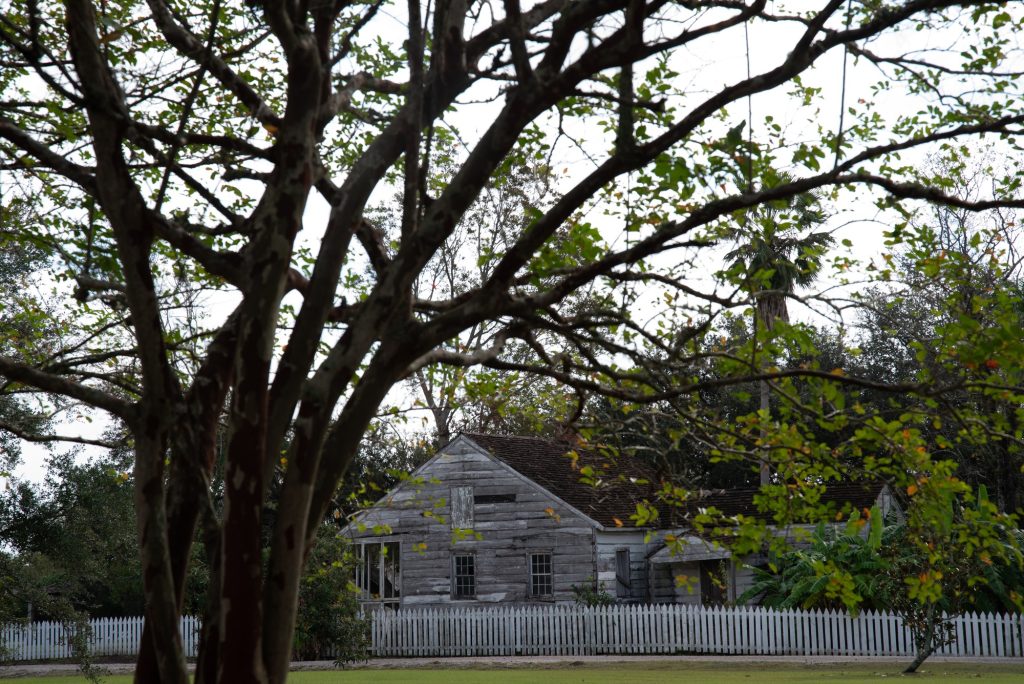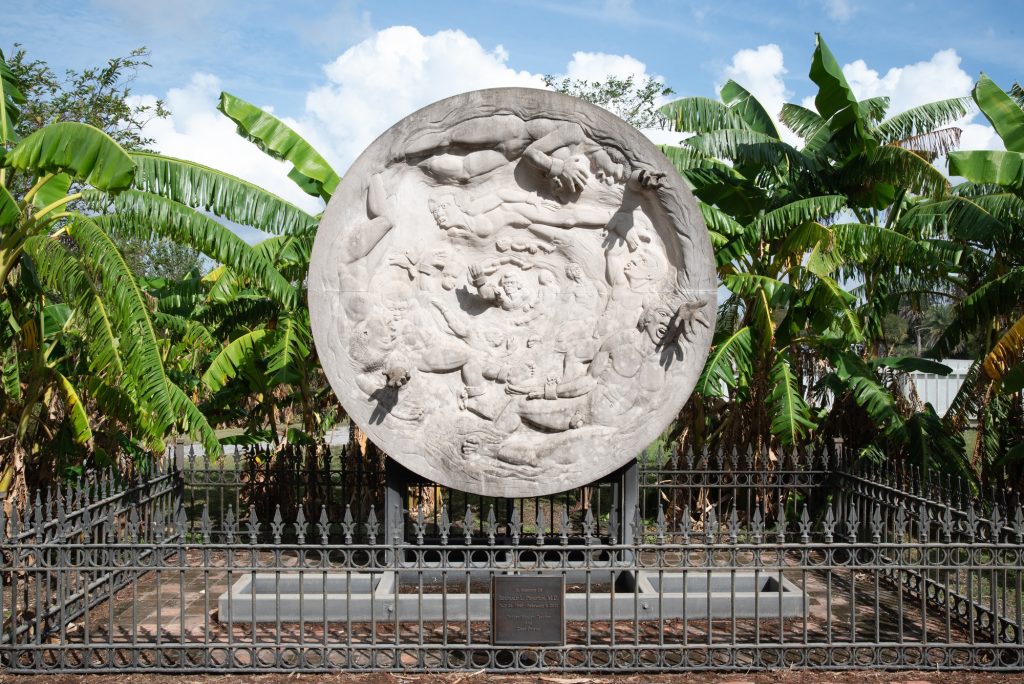At the Whitney Plantation located in New Orleans, Louisiana, I walked the powerful grounds in a guided tour that revealed so much about the history and stories of the enslaved African people who labored on these grounds centuries ago. I felt deeply humbled as the tour took me through the plantation preservations, which included the Antioch Baptist Church (1870, once known as the Anti-Yoke Baptist Church, symbolizing anti-slavery), Robin’s blacksmith shop, the Big House, the Bell, and other memorials. I stood at the Wall of Honor, listing over 350 enslaved African names and stories in honor of their suffering, and walked through the last two slave quarters left standing since Hurricane Ida in 2021. Learning about their day-to-day routines filled me with a sense of resilience and profound respect. I saw how inhumane their living conditions were, from their labor in growing crops like sugar cane to their living quarters. The large iron bell I learned was rung before dawn, for mealtime, for mother’s nursing schedules, for punishments, and for grueling work time. It now stands in remembrance of how far we have come as people. The most humbling preservation I witnessed was the slave revolt memorial. I stood in silence as I paid respects to those whose heads were planted on poles in honor of the resistance 1811 slave revolt. Overall my visit to the Whitney plantation was extremely humbling and left me with even more respect for those who endured and suffered, shaping Louisiana history forever.
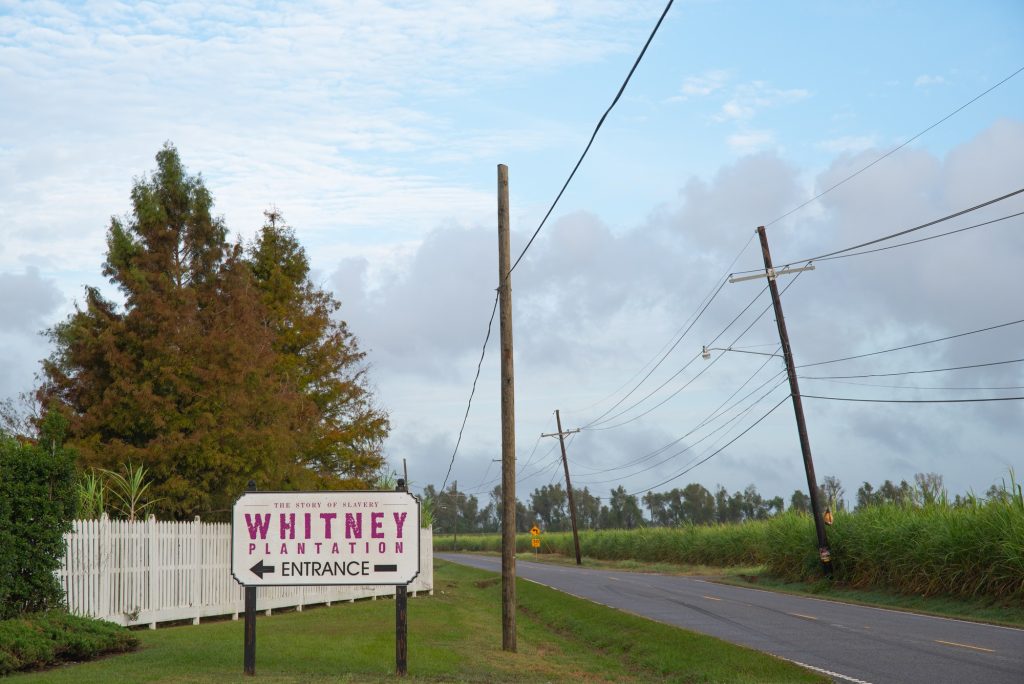
The entrance to Whitney Plantation off of Louisiana Highway 18. Photographed by Finn Martin/BruinLife.
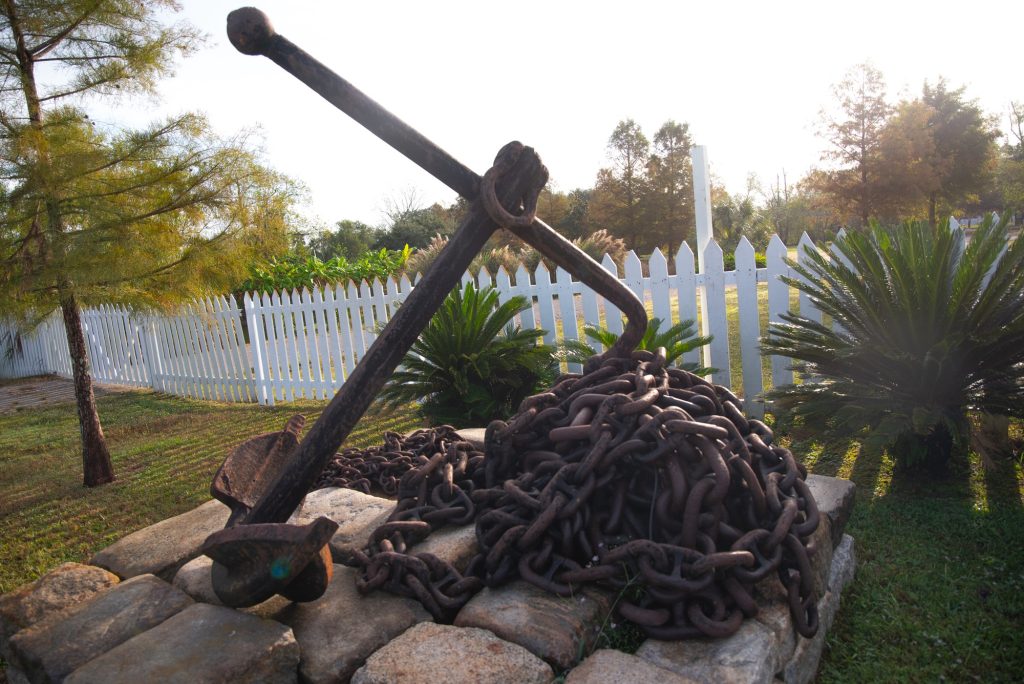
An anchor from a slave ship rests on display near the plantation entrance. Photographed by Finn Martin/BruinLife.
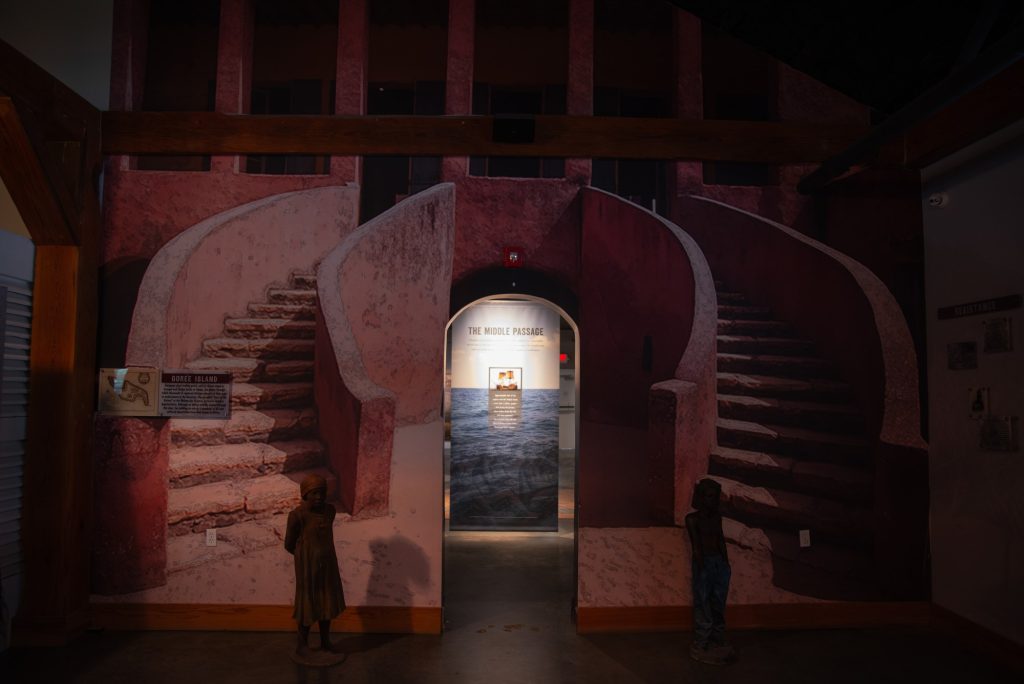
The Whitney Plantation museum's depiction of the Door of No Return, a reproduction the actual door built at the Maison des Esclaves on Gorée Island, Ghana, memorializing all those who were captured and deported to the Americas for bondage. Photographed by Finn Martin/BruinLife.
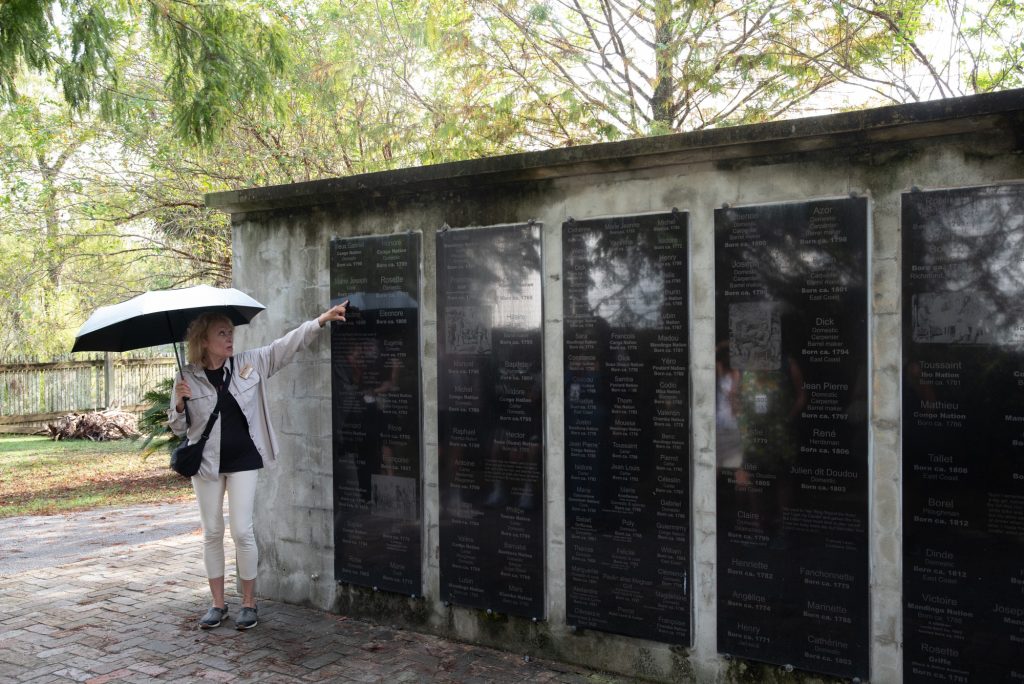
The Wall of Honor bears the names of former enslaved persons who passed through the plantation. Many of those enslaved lost their former names in the middle passage across the Atlantic and were given Anglo names, sometimes resembling their enslavers. Photographed by Finn Martin/BruinLife.
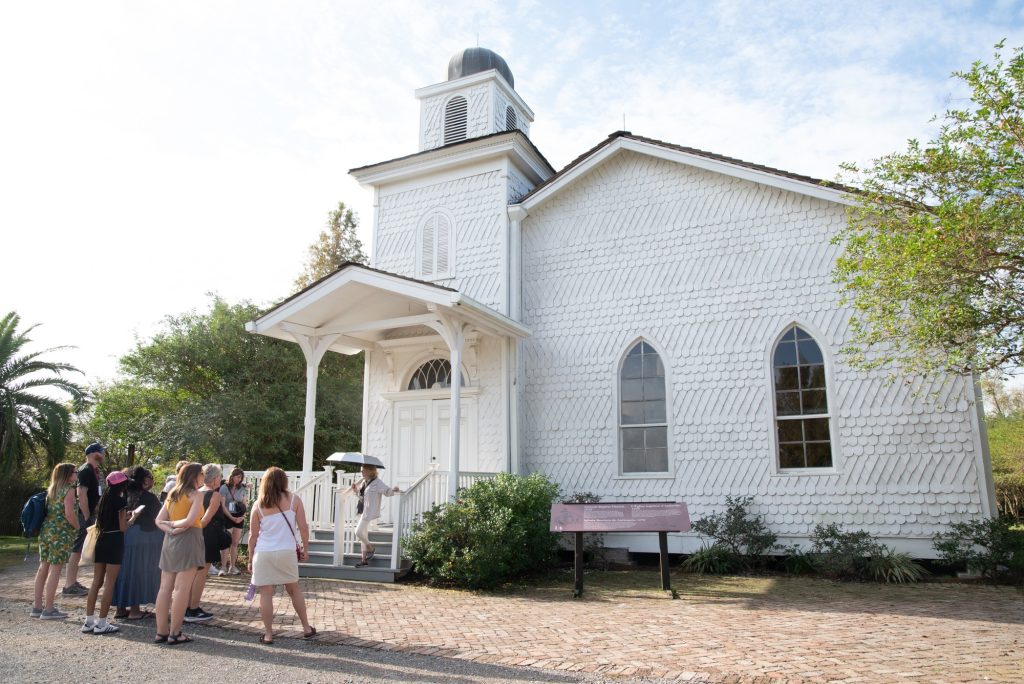
The Antioch Baptist Church on the Whitney Plantation was built by freedmen in 1870 to offer a place of worship for the Anti-Yoke Baptist Congregation, a society of former slaves. Photographed by Finn Martin/BruinLife.
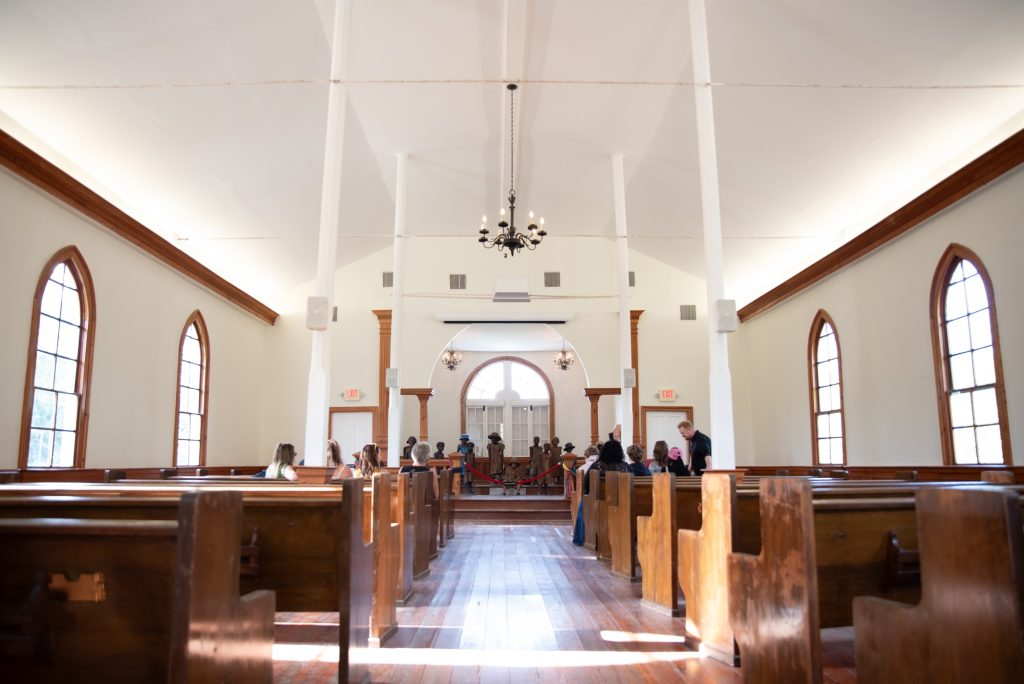
A row of pews inside the Antioch Baptist Church leads to a sculpture exhibit by artist Woodrow Nash. Photographed by Finn Martin/BruinLife.

Sculptures of emancipated slave children by artist Woodrow Nash stand in the Antioch Baptist Church. Because the enslaved were prohibited from looking their enslavers in the eye, Nash purposefully neglected to add eyes to the sculptures. Photographed by Finn Martin/BruinLife.
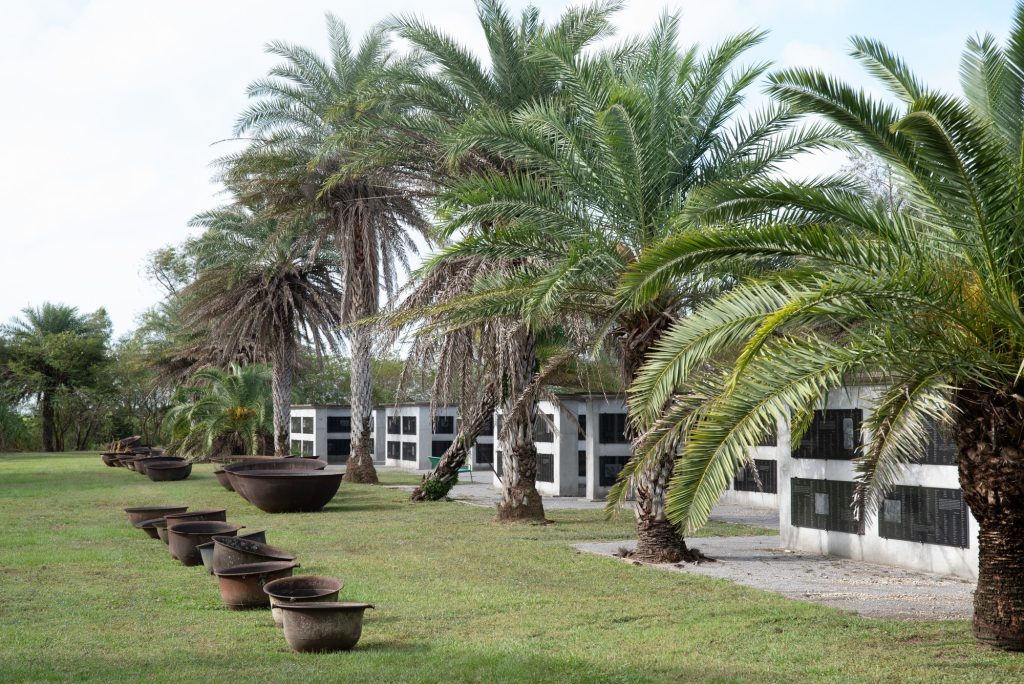
Sugar kettles line along palm trees. Slaves would arduously break down and ferment sugar cane from the plantation and nearby sources would using these kettles. Photographed by Finn Martin/BruinLife.
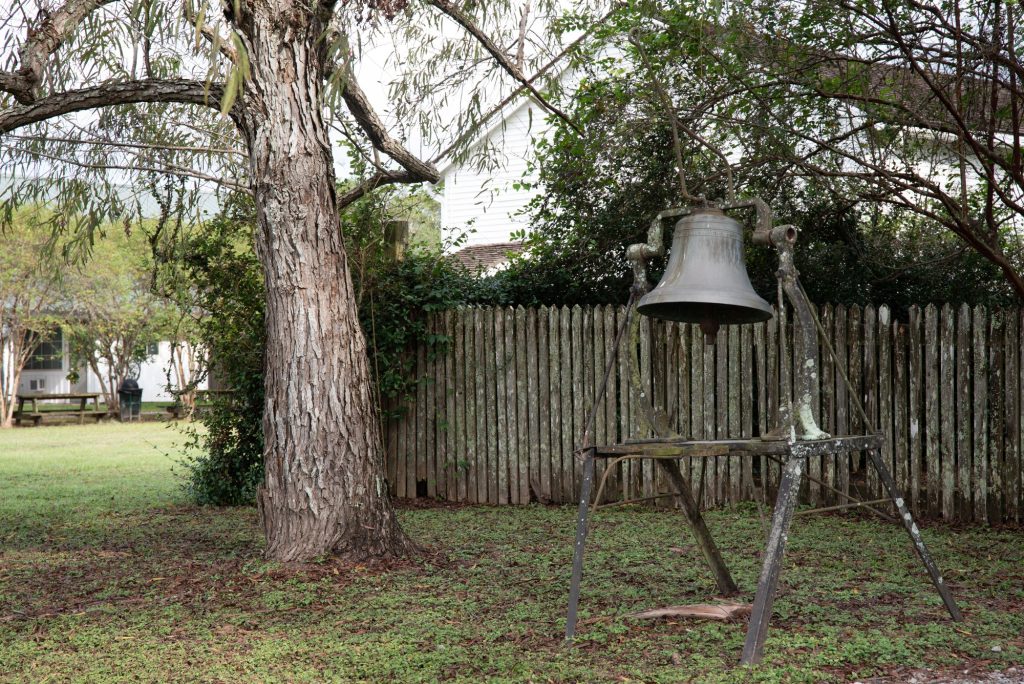
Enslaved people's daily lives would be regimented by the ringing of a bell. Photographed by Finn Martin/BruinLife.
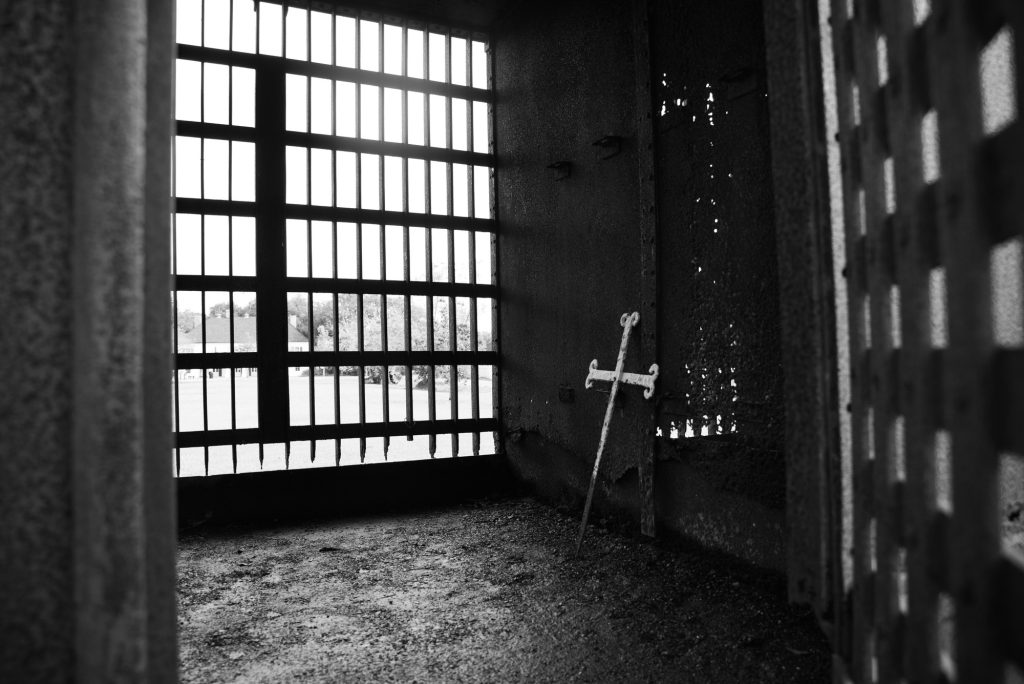
A cross lays against the wall to a jailhouse on the plantation. Photographed by Finn Martin/BruinLife.
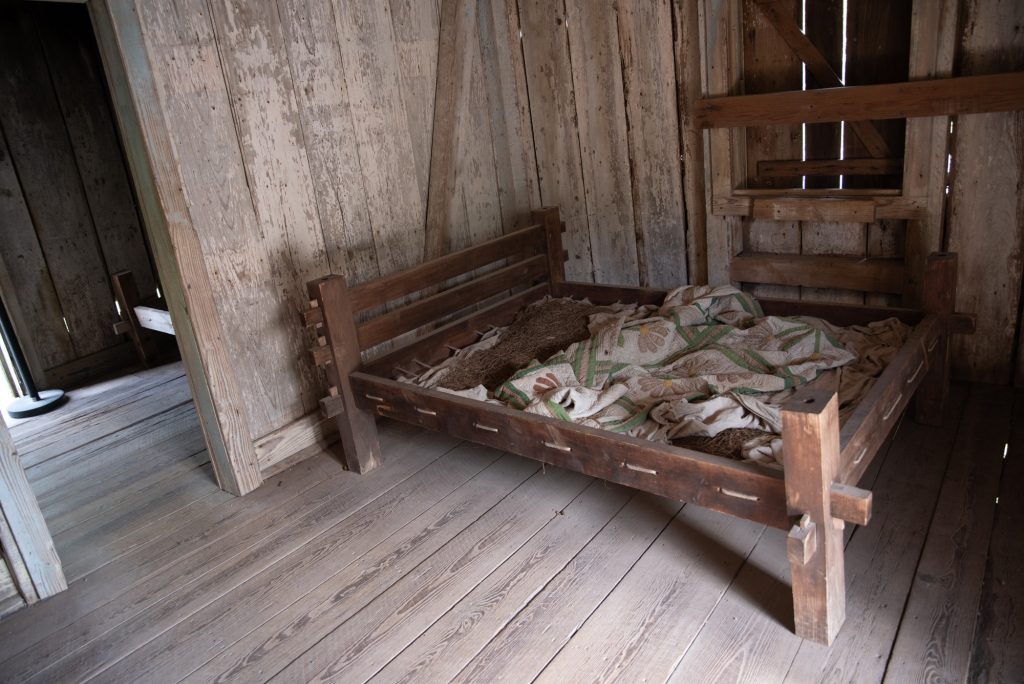
A reconstruction of a barely sheeted bed frame inside a cabin where the enslaved lived. Photographed by Finn Martin/BruinLife.
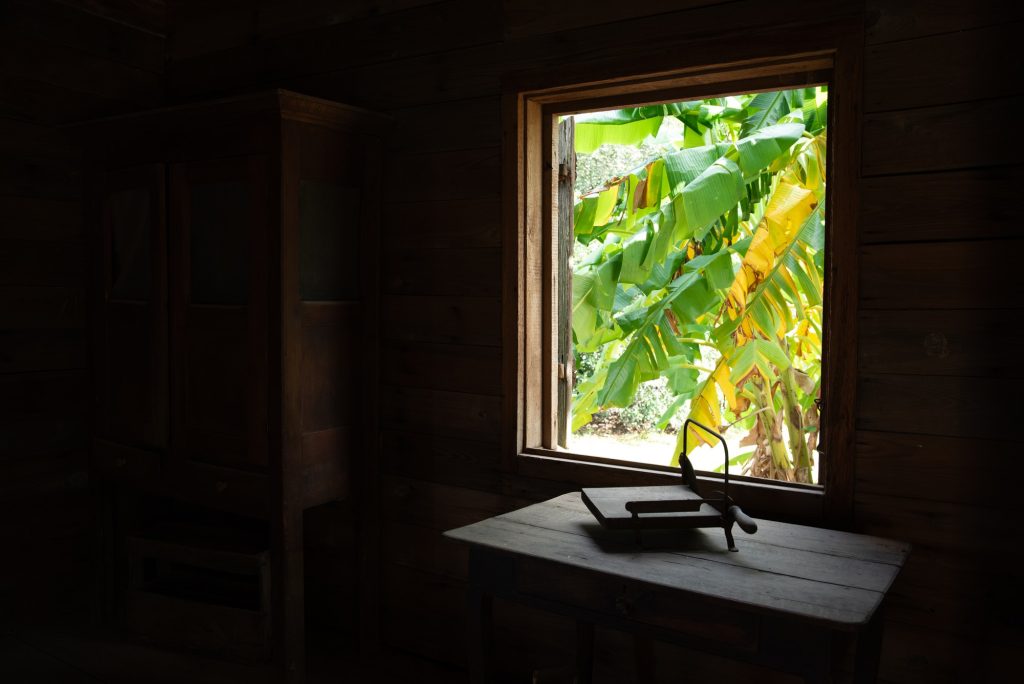
A window inside a kitchen where the enslaved prepared meals for the enslavers opens to a palm tree. Photographed by Finn Martin/BruinLife.
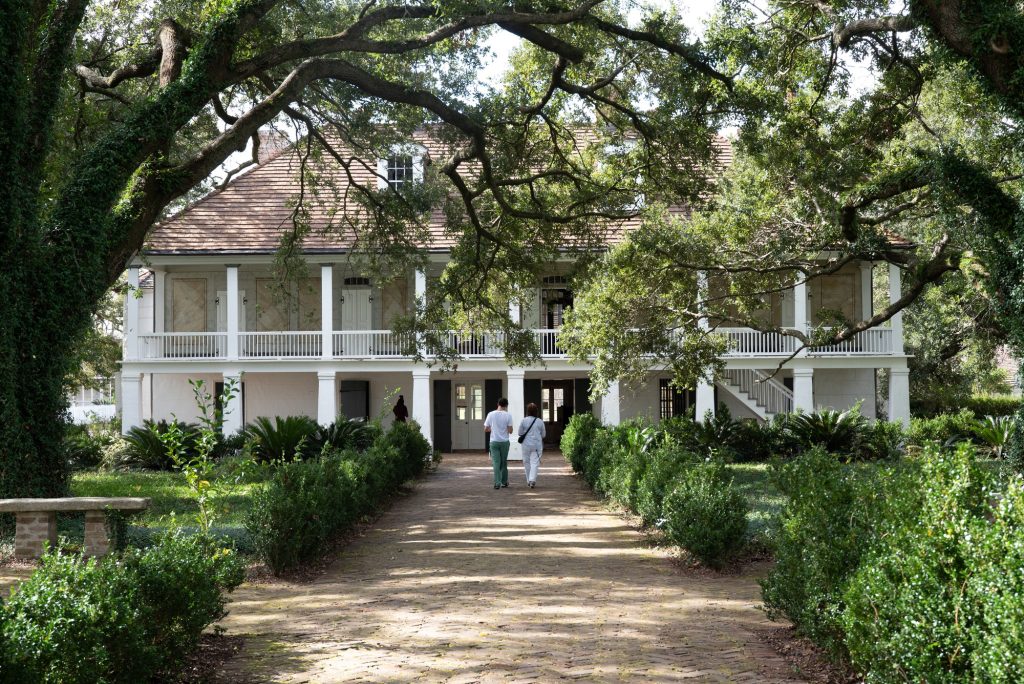
The garden facing facade of the enslavers plantation manor. Ivy covered oak trees enclose the promenade leading to the three story home, furnished with a false façade of painted marble. Photographed by Finn Martin/BruinLife.
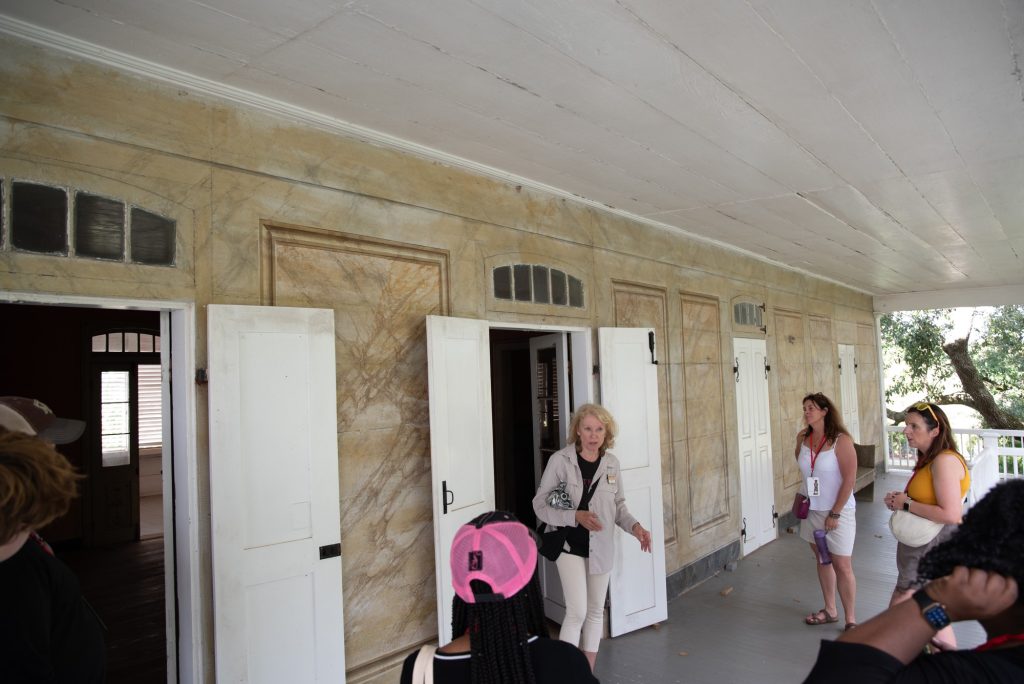
The exterior to the Big House was painted to imitate a faux-marble design. Photographed by Finn Martin/BruinLife.
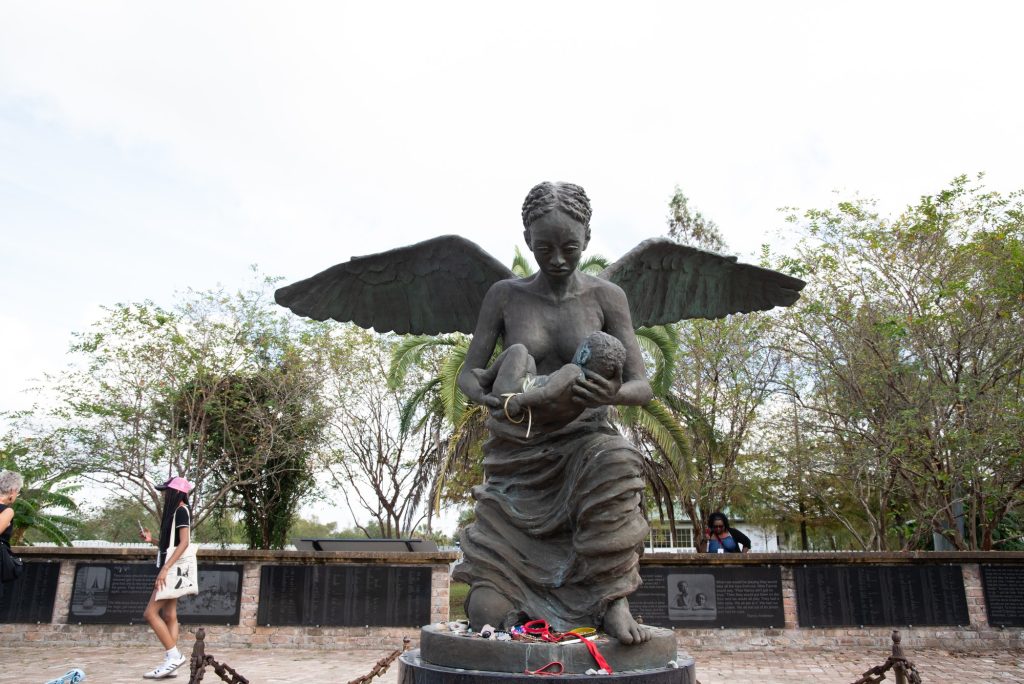
An angel cradles an enslaved child in the end memorial to the Whitney Plantation tour. Photographed by Finn Martin/BruinLife.
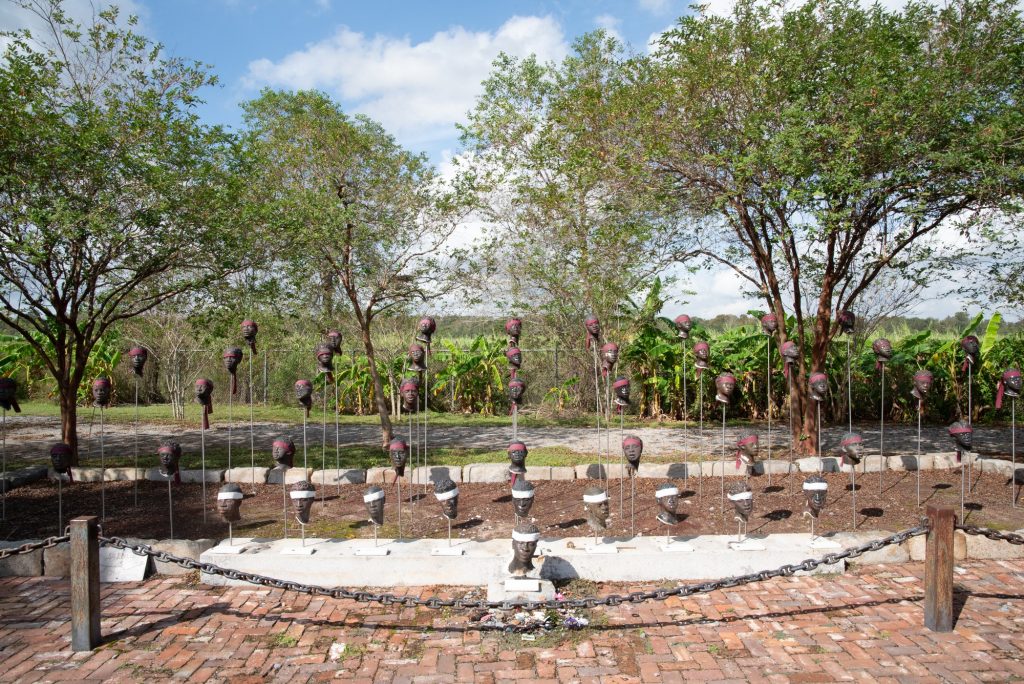
A memorial to the executed insurgents of the 1811 German Coast Uprising. Over 500 enslaved people revolted on January 8th of 1811 in what was the largest slave revolt in the Southern United States, ultimately ending in the defeat, capture, and beheading and public display of the insurgents. Photographed by Finn Martin/BruinLife.

